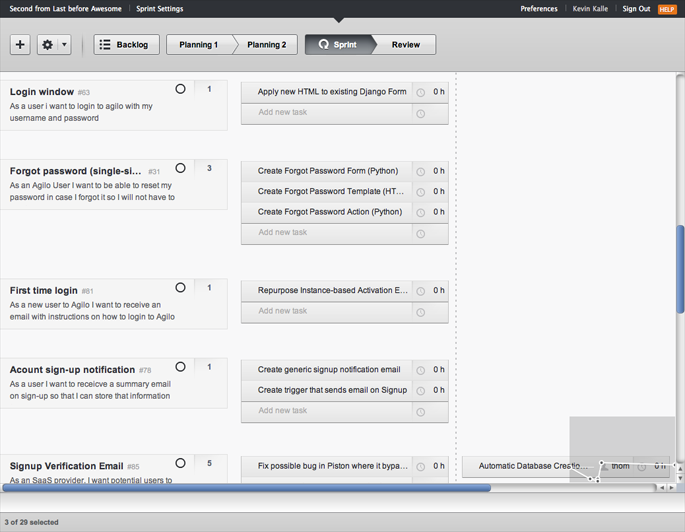Large Batch hand offs : Trapped in Wagile (part 3 of 4)
This is part three of the continuing series of articles. In the first article of this series, I outlined three fundamental characteristics of waterfall system. In the previous article (part 2), I explained Phase-Gates and the unintended consequences when phase-gates encounter agile transformation efforts. In this article I will dive into Large Batch handoffs.
Working in large batches is based on thinking that handling large batch sizes during each phase optimizes:
- Resource (people) Utilization
- Quality : By use of people’s primary skill set
- Reduction in rework
- Decisions : through a broad holistic perspective
Expected System Behavior:
Fractal Nature:
At portfolio or organization level:
There are many active projects or initiatives, where in a majority of them have minimal or no impact on organization revenue/competitiveness in the current cycle.
At project implementation level:
Many active initiatives are bottlenecked by architecture group that is under high workload yet insists that all projects must submit their design for approval by the architecture group.
At task level:
Team members sign up for a few days of work and often do bulk check-ins that result in complicated build and merge issues.
Utilization Focus:
Most people are busy and have ample tasks to do. Often people are already behind and stressed about catching up with their work load.
Despite high utilization the organization system is struggling to get projects “done”. Management is stressed about active projects that never seem to complete.
With institutionalized busy-ness come weekly ‘red-yellow-green’ status meetings. Most participants turn on their zombie state and learn to check up on email under the drone of status updates.
Big Upfront:
Design and architecture for finality as opposed to changeability. This leads to big up front effort while designing and architecting. In subsequent phases – choices alternative to initial design, get eliminated by rule-of-thumb that any changes to requirements/design/architecture will require lengthy and delayed review and approval process and hence are not needed.
Large batch of testing and integration work gets pushed towards the end of the project. Delays during previous phased hand-offs accumulate and get transferred to later phases of product delivery.
Next Generation and Framework projects:
It is common to see “next generation” and “framework” proejcts creep up in these organization. Focus on utilization of people’s primary skillset has blinding effects on all other senses (including common sense). In these organizations lack of results is so rampant that leadership and their subjects desperately seek assurance and clamor to work on “cool” projects. These are often labled “Next Generation” or “framework” implying some uber-wisdom that other’s less able can not attain. It is often that such Product development efforts get stuck within technical group who are perfecting and still not “ready” with master framework that will enable them to accept and develop features.
Unintended Consequences:
Decision concentration:
Imagine that on the first of each month one has to decide on their attire for every one of their work day for the rest of the month. Sounds silly! – But, with large batches organizations are doing some thing similar on a much grander scale. With large batch processing we are effectively concentrating all relevant decisions in a fixed time window. Not allowing for reassessment of product needs in light of new requirements or new design/architecture options.
Defect concentration:
With large batches, not only features but also defects get produced in large batches. An error in design choice or code implementation will be replicated until this area of product is tested or validated. This results in large area of code or functionality to be reworked. Working in large batches is favored by optimizers of functional process step (design/code/test) as this allows them to review holistically and make sound choices. But they always fail to account for holistic mistakes that they will also have and in aggregate cause huge expensive blunders. Limiting work in progress allows for learning from small less expensive errors.
Local Optimization:
People tend to optimize for their task/responsibility completion as opposed to working towards team optimization and quality throughput. With large batch of work at hand, people find it easier to optimize for large amount of design/code/test. This headphone-in-the-zone approach while maybe ideal for grunt work or isolated tasks – does not suit product development. Non-linear implications abound where in choices made by one team member disproportionately affects another team member’s options. There is no substitute to collaboratively flowing freely as a team through requirements ~ design ~ code ~ test aspects of product development.
Context Switching:
Large batch hand-offs are desirable on the premise that work handled in large batch sizes allows workers to optimize towards completion.
So when test is testing feature-(N), code is being done for feature-(N+1) and design is being done for feature-(N+2). When an issue is identified by test in feature-(N) others in code and design have to make a context switch from their in-progress feature (N+1) or feature-(N+2) to accommodate this unpredictable request. This often leads to:
- larger than anticipated inefficiencies
- Faulty assumptions implemented in code for feature-(N+1) that are not yet exposed while testing for feature-(N)
- Quick fixes that do not address root-cause.
These lead to long-term instability and brittle product core.
Summary:
Delaying feedback and integration aggregates errors into blunders. Fear of small batch incremental development stems from inability to cope with interests of people focused on other important aspects of overall project. While there are many avenues for help and coaches available to show you the way (Many publishing practices in open public forums – one quick search engine query away). I have found that when it comes to change, those who are able to move to a better state – CARE!. Those who care about others interests and overall product always figure out ways to reach out, collaborate and problem-solve to make small batch sizes a reality in their organization. While the ones who don’t care, make excuses.
Proceed to final part four (Centralized Control).

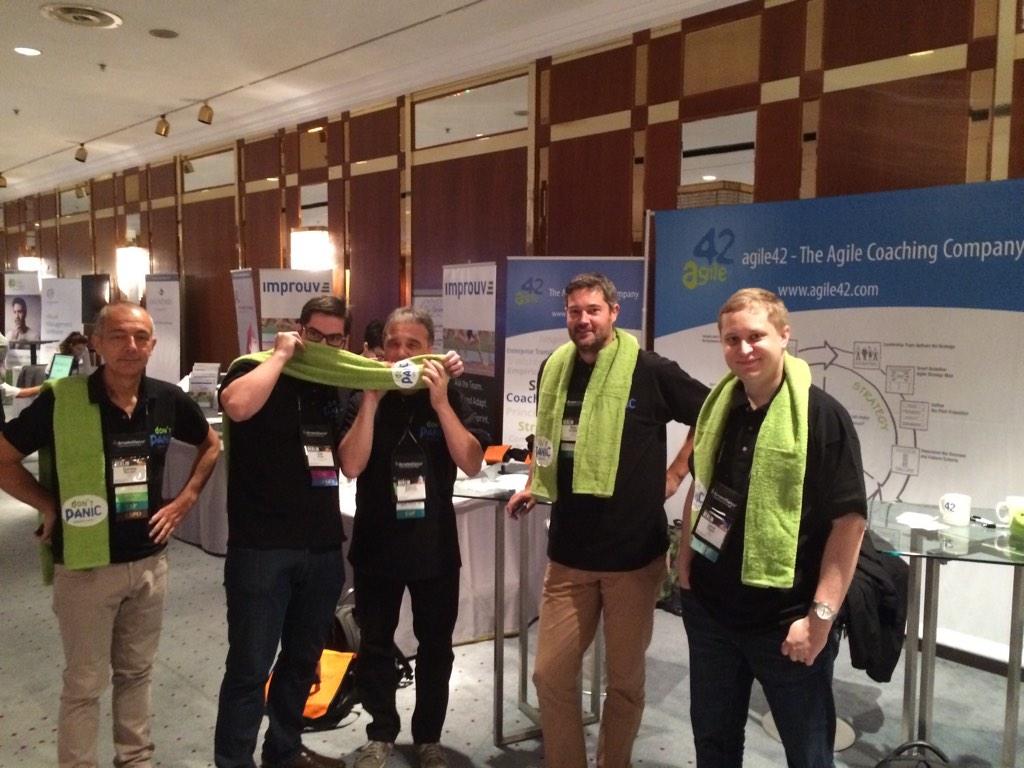
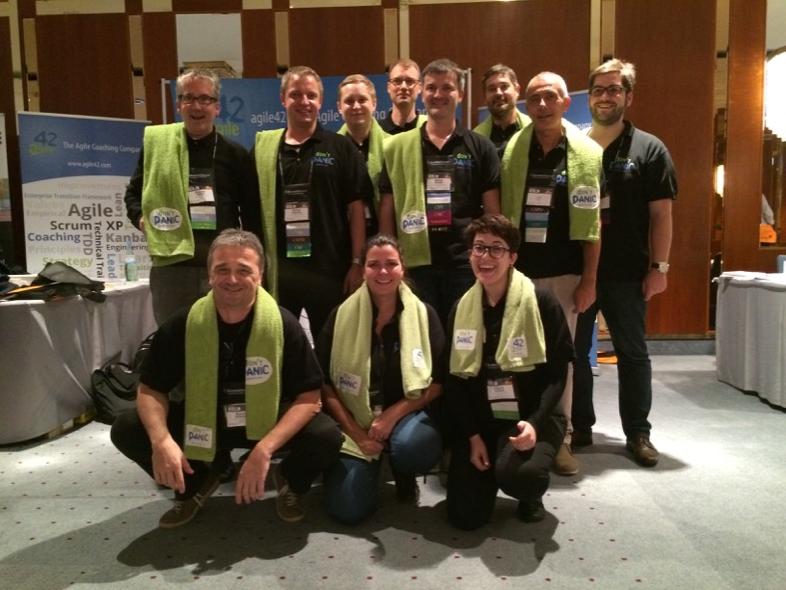
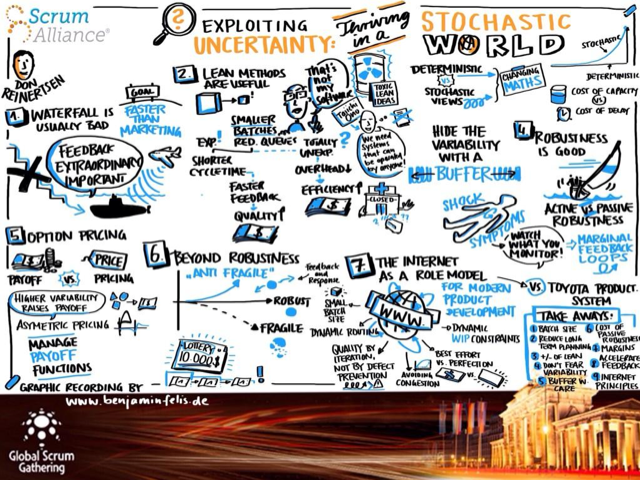
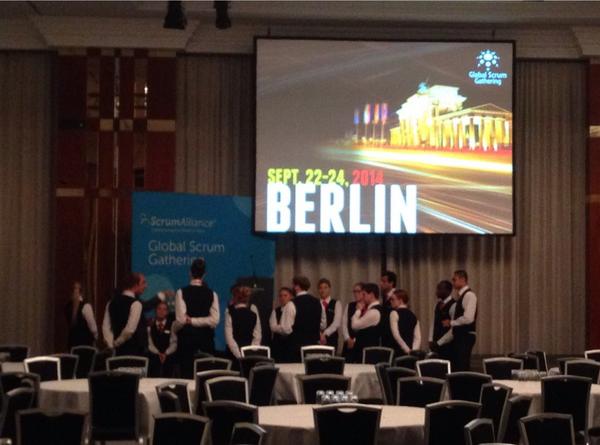

 It’s nearly too good to be true: you probably know that “42” in agile42 name is a
It’s nearly too good to be true: you probably know that “42” in agile42 name is a 
 Command and control style management often manifests in organizations that have Centralized Control characteristics. In such organizations, decisions are always made by a select few. Organizational gossip is the primary means of getting real information and management lacks awareness of real problems on the ground. Project effort, “TPS reports” (bureaucratic paper work that adds no value) and tasks make little sense to people doing the work and managers consistently feel ill-informed despite many daily, weekly and monthly status updates. Most feel like a piece in a chess-game. Some carry the illusion of more power than others, but each are equally at mercy of the organization system complexity that plays them.
Command and control style management often manifests in organizations that have Centralized Control characteristics. In such organizations, decisions are always made by a select few. Organizational gossip is the primary means of getting real information and management lacks awareness of real problems on the ground. Project effort, “TPS reports” (bureaucratic paper work that adds no value) and tasks make little sense to people doing the work and managers consistently feel ill-informed despite many daily, weekly and monthly status updates. Most feel like a piece in a chess-game. Some carry the illusion of more power than others, but each are equally at mercy of the organization system complexity that plays them. Waterfall as implemented in one organization is different from waterfall implemented in another organization. Think of these three characteristics as primary colors in RGB Color Model.Organizations differ in their waterfall-ish-ness due to differences in their emphasis on one characteristic over the other.
Waterfall as implemented in one organization is different from waterfall implemented in another organization. Think of these three characteristics as primary colors in RGB Color Model.Organizations differ in their waterfall-ish-ness due to differences in their emphasis on one characteristic over the other.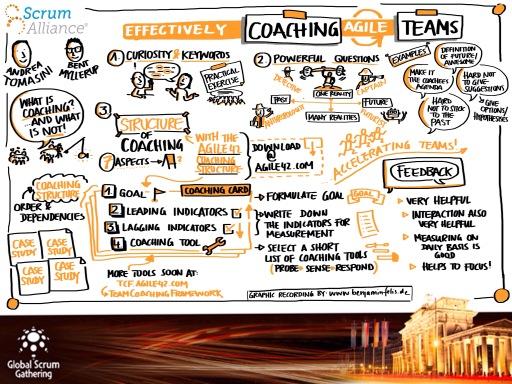
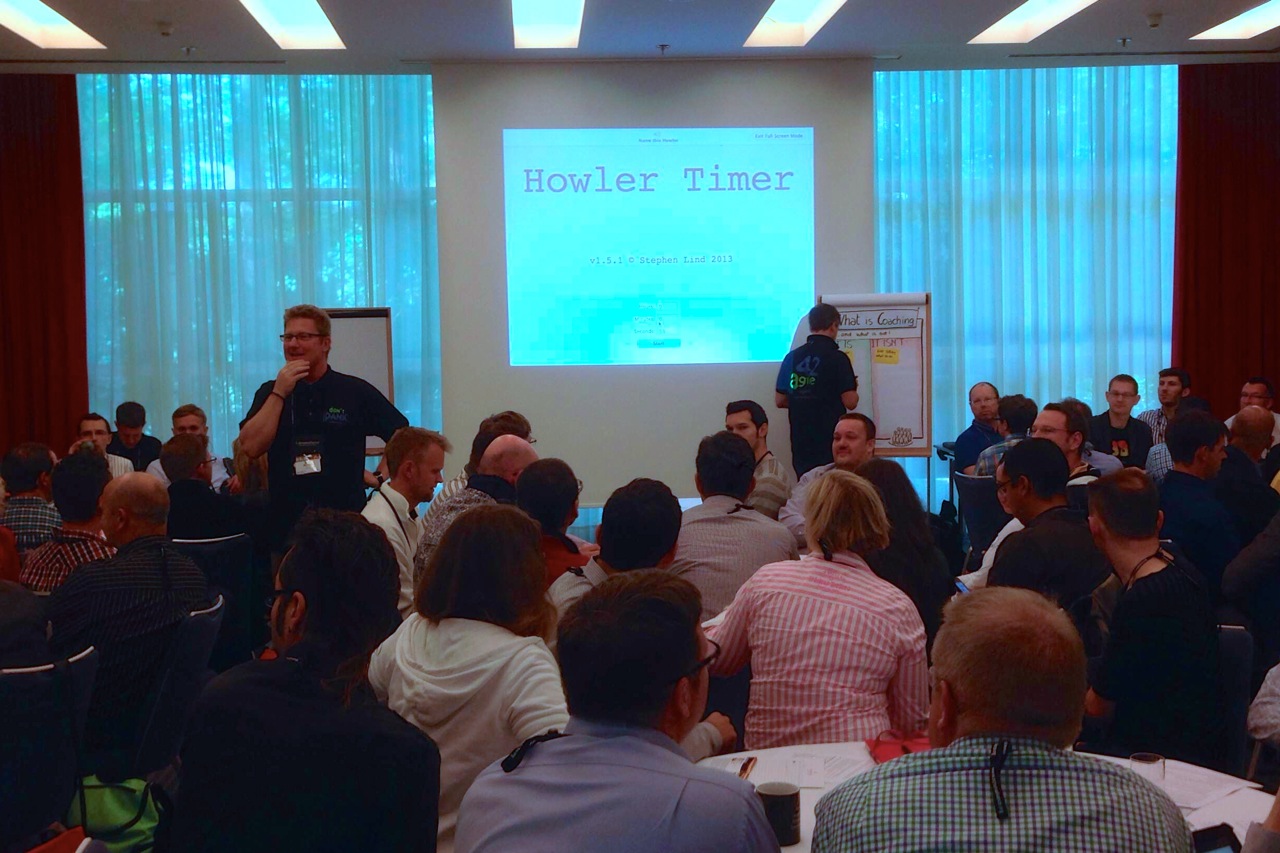
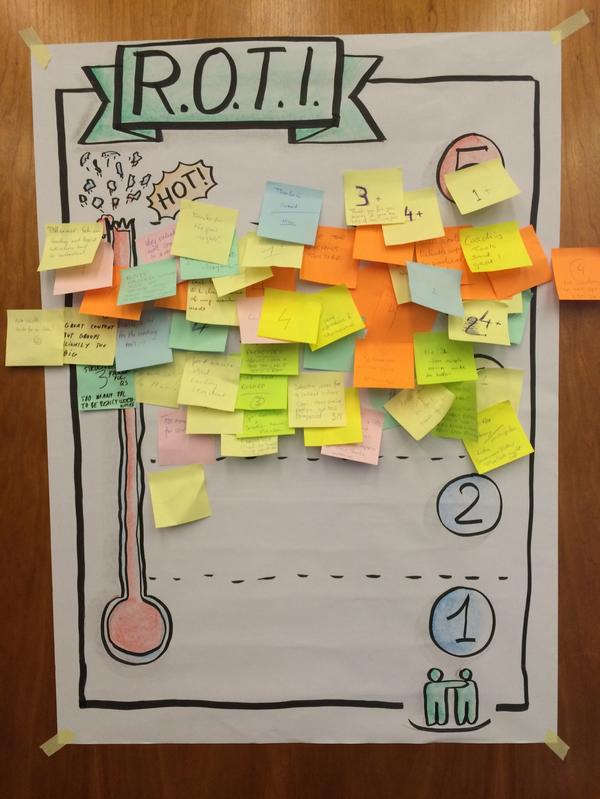
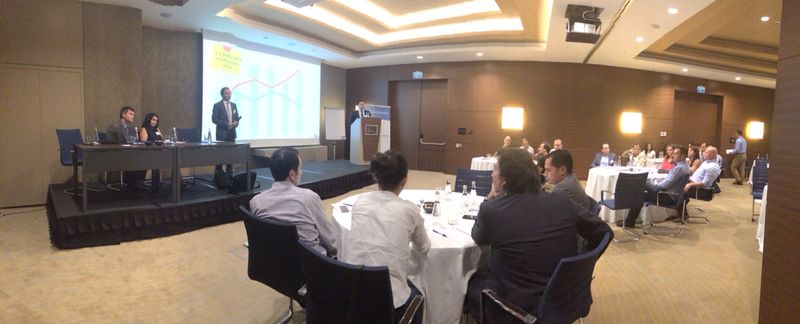
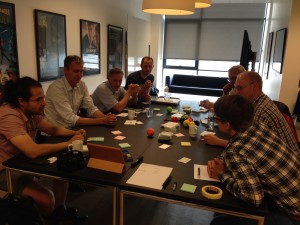
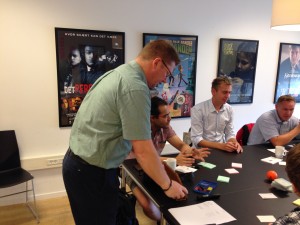
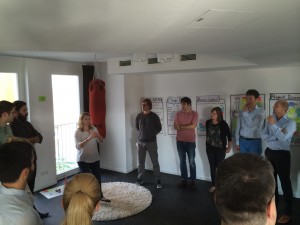
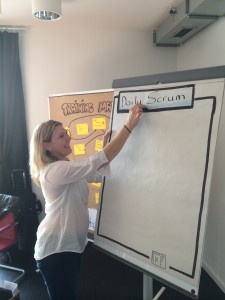 CSM in Berlin with Andrea Tomasini
CSM in Berlin with Andrea Tomasini
